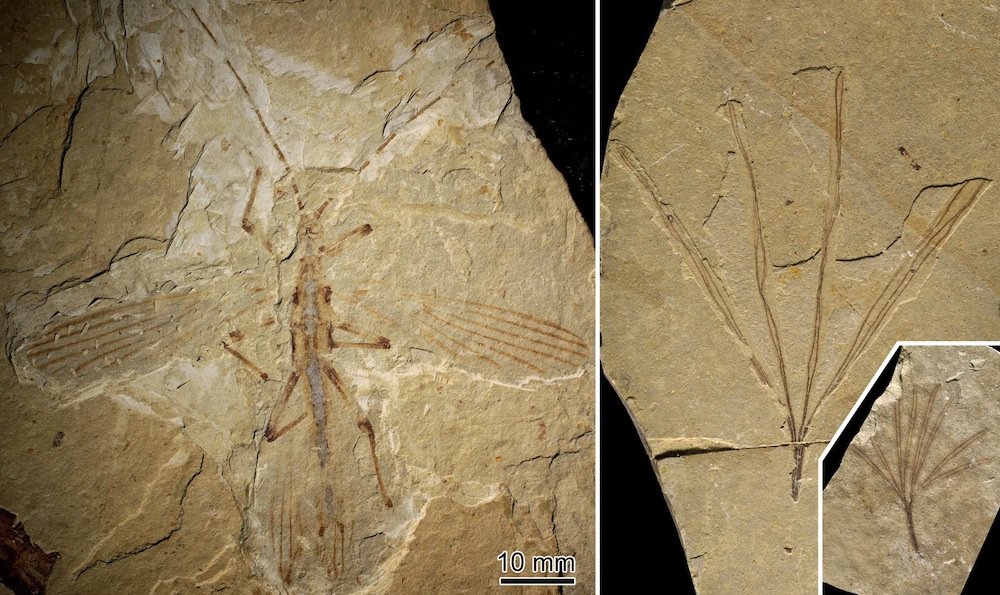
The oldest-known stick insect to mimic a plant has been unearthed in China.
The newly discovered species — an extinct, distant relative of living stick insects — dates to the early Cretaceous Period, roughly 126 million years ago.
The buggy impostor likely used its leaflike appearance to hide from tree-climbing predators that dined on insects, said study co-author Olivier Béthoux, a paleontologist at the Center of Paleobiodiversity and Paleoenvironment Research (CR2P) at the National Museum of Natural History in Paris. [Locked in Stone: A Gallery of Fossilized Insects]
Impostor
The leaf look-alike was discovered in a deposit from the Yixian formation in China, where a diverse array of well-preserved dinosaurs, plants and insect fossils from the Cretaceous Period have been unearthed in recent decades.
Béthoux was particularly interested in the fossils of the diminutive fossil insects because both male and female specimens were found in the same layer in the formation — an unusual find.
"But afterwards, I realized there was something interesting about the coloration pattern of the wings," he told Live Science.
Sign up for the Live Science daily newsletter now
Get the world’s most fascinating discoveries delivered straight to your inbox.
The newly discovered species, Cretophasmomima melanogramma, sported wings with thin, dark, parallel lines threading through them. When still, the wings created a tonguelike shape that hid the insect's abdomen.
Plant look-alike
It wasn't exactly clear why the insect had that strange coloration.
But the team had a lucky break. In the same fossil formation layer, they also found a distant relative of the gingko plant, called Membranifolia admirabilis, with pale leaves and similar dark-veined lines running through it. This pattern of veins in plants was also fairly peculiar, Béthoux said.
None of the pigmentation remained, but the insect may have once appeared green with dark-purple lines running through it, or perhaps dark yellow, the team speculates.
The discovery of both specimens suggests the insect had evolved its leaf mimicry— or, more specifically, its gingko-leaf mimicry — to evade hungry predators.
"We know from the same locality where the stick insect was discovered that there are a bunch of predators," including tiny, tree-climbing dinosaurs and mammals with insect-eating teeth, as well as birds, Béthoux said.
The impostor strategy probably helped the insect hide in plain sight.
"You want to avoid being eaten," Béthoux said.
The findings were published today (March 19) in the journal PLOS ONE.
Follow Tia Ghose on Twitter and Google+. Follow Live Science @livescience, Facebook & Google+. Original article on Live Science.

Tia is the managing editor and was previously a senior writer for Live Science. Her work has appeared in Scientific American, Wired.com and other outlets. She holds a master's degree in bioengineering from the University of Washington, a graduate certificate in science writing from UC Santa Cruz and a bachelor's degree in mechanical engineering from the University of Texas at Austin. Tia was part of a team at the Milwaukee Journal Sentinel that published the Empty Cradles series on preterm births, which won multiple awards, including the 2012 Casey Medal for Meritorious Journalism.









